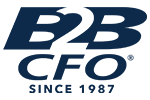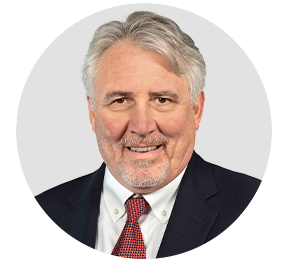
Navigating the 2025 SECURE 2.0 Act: Key Updates Every Business Owner Needs to Know
Posted on November 14, 2024 by B2B CFO
The Secure 2.0 Act of 2022 expands on the original SECURE Act of 2019, introducing 92 new provisions to enhance retirement savings opportunities, boost business incentives, and offer greater flexibility for savers.
Stay ahead by understanding the latest updates to the Secure (Setting Every Community Up for Retirement) Act 2.0 implemented in December 2022. These changes to government-sponsored retirement plans could impact your company.
Necessary changes in company-sponsored retirement plans must be made before 1/1/25 or during 2025.
Although the changes may be complex, this guide provides a detailed overview of what small business owners need to watch for in the coming year.
How SECURE 2.0 Act Changes Will Impact Your Business in 2025
Consider working with a strategic business advisor using the list below as a guide to ensure you are not only compliant with all necessary plans but also can take advantage of those that apply to your company.
- Mandatory Automatic Enrollment & Escalation
The SECURE 2.0 Act requires NEW defined contribution plans to include provisions that would automatically enroll employees once eligible. The initial automatic savings rate must be at least 3% but no more than 10%.
What else does that mean for you?
- Starting January 1, 2025, there is a new requirement for retirement plans that business owners need to be aware of. The savings rate for retirement plans must automatically increase by 1% each year. This increase will continue annually until the savings rate reaches a minimum of 10% but will not exceed 15%.
What You Need to Do:
- Ensure your retirement plans are updated to reflect this automatic annual increase.
- This change is crucial for compliance and to ensure your employees’ retirement savings are growing effectively. Please modify your retirement plans now to be ready for this change.
- Note: Employees may elect out of saving at any point. The overall goal of this provision is to increase participation by requiring employees to opt out instead of opt in.
The other 3 items to note under this provision include:
- Automatic Enrollment: SECURE 2.0 mandates automatic enrollment in 401(k) and 403(b) plans established after December 29, 2022, with grandfathering rules for plans adopted before that date. This could mean that any company with a 401(k) created before 12/29/22 can be grandfathered.
- Safe Harbor Correction: The Notice introduces a safe harbor for correcting automatic enrollment errors, aligning with previous guidance but with key differences, including provisions for terminated employees and updated deadlines for allocating matching contributions.
- Extended Amendment Deadlines: This notes that the deadlines for adopting plan amendments under SECURE 2.0 and related acts have been extended by an additional year, with new deadlines ranging from December 31, 2026, for most nongovernmental plans to December 31, 2029, for governmental plans.
- The Beginning of “Starter K” and Other Contribution Changes:
With the creation of what is called “Starter K”, employees can contribute a maximum of $6,000, with a $1,000 catch-up for those 50 or over. Due to the deferral limit decrease, employers do not have to worry about annual ADP, ACP, or top-heavy testing. In other words, smaller businesses that have not been able to provide a 401(k) for employees can now offer this Starter K plan.
As for the catch-up contribution limit, starting in 2025, it will increase to $10,000 for employees aged 60 to 63. The limit will account for annual inflation, but note that all catch-up contributions will now be required to be Roth. The only exception is if the employee earns $145,000 or less every year.
Additionally, the required minimum distribution (RMD) age has been increased to 73; if companies have employees working at age 73, they will need to review the RMD provisions of the plan.
Below is a helpful breakdown of account limits by age:
Starting in 2025, IRA and ROTH account limits are:
- Under Age 50 = $7,000
- Over Age 50 = $8,000 ($1,000 catch-up will now be adjusted for inflation (AFI))
401(k) limits:
- Under Age 50 = $23,000
- Over Age 50 = $30,500 ($7,500 catch-up)
- *Ages 60-63 = $33,500 (catch-up increased to the greater of $10,000 AFI or 150% of regular catch-up)
SIMPLE limits:
- Under Age 50 = $16,000
- Over Age 50 = $19,500 ($3,500 catch-up)
- Ages 60-63 = $24,500 (catch-up increased to the greater of $5,000 AFI or 150% of regular catch-up)
Subject to taxable compensation limits -
- Student Loan Matching
This new perk is an exciting one and is an added benefit companies can offer to their employees. Plans that began after December 31, 2023, can have payments made by the employer that match an employee’s student loan payments. Please note that when calculating the match, the total of student loan payments and elective deferrals cannot exceed the annual participant contribution limit ($22,500 for 2023). In other words, employers can provide a retirement plan that matches contributions based on an employee’s student loan payments instead of actual retirement contributions.
Example: An employee earns $50,000 annually and pays $500 per month ($6,000 annually / 12% of salary) toward student loans, yet they cannot afford to save for retirement on top of student loan payments. In this case, an employer who has adopted this plan’s provision and normally contributes 4% of the employee’s retirement savings can now deposit $2,000 in the employee’s retirement account even if the employee contributes nothing.
- More Opportunities for Part-Time Work
The new Act’s provisions also allow employers to limit plan participation to employees who are at least 21 years old and either work 1,000 hours in 12 months or have 12 months of service.
- Employers using the first requirement of 1,000 hours in 12 months must now also offer an eligibility option of 500 hours in 3consecutive years.
- For example, if a 45-year-old employee has worked 600 hours per year since 2022, an employer is now required to permit them to participate in their retirement plan that starts AFTER December 31, 2024, if he works until November 1, 2024, two consecutive years after the original effective date of January 1, 2021.
Ultimately, the new Act shortens the time for part-time employee eligibility to 500 hours in 2 consecutive years. Again, only recent employees will benefit from this new Act since it applies only to plan years after December 31, 2024.
Final Thoughts
All business owners reading this article should be aware of 3 final things:
- They have until the end of the first plan year beginning on or after January 1, 2025, (instead of 2022) to amend their Plan documents to comply with required provisions under the SECURE Act, SECURE 2.0 Act, CARES Act, and Taxpayer Certainty & Disaster Tax Relief Act.
- Employers can operate as though those future amendments are already made without violating the anti-cutback requirement applicable to all plans.
- Current laws require a multitude of notices regarding the Plan and Plan activities to be sent to all employees, even if employees opted out of participation in the Plan. Non-plan participants must now receive an annual participation reminder of any requested documents.
Understanding all the details and ensuring compliance with the SECURE Act 2.0 can feel overwhelming for many business owners. That’s why partnering with a trusted strategic business advisor and CFO like B2B CFO® can make a significant difference. With our expertise, you can confidently navigate these complex changes, ensuring your retirement plans are compliant and your business is positioned for success. B2B CFO® provides the guidance and support you need to stay ahead, putting you in the driver’s seat with the confidence to manage your business’s financial future effectively.


